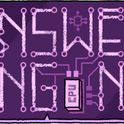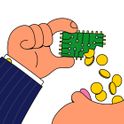When Ciprian Manolescu was working for his PhD in mathematics, he heard about a famous unsolved problem: the triangulation conjecture. It was too difficult for a doctoral thesis, so he worked on a more tractable problem in the same area, known as topology. For the next 10 years he didn’t think about the triangulation conjecture at all. Until one day he realised that the ideas in his thesis show that the conjecture is false.
If his proof holds up under scrutiny—and experts seem to think it will—this is a major breakthrough and a spectacular result. Its importance in mathematics is comparable to that of the Poincaré conjecture, which Grigori Perelman proved a few years ago to great acclaim. And the new methods involved are likely to lead to further advances.
Topology is about properties of mathematical shapes that persist under continuous deformations: squash, stretch, bend, but don’t tear. A cube, for example, can be deformed into a sphere. However, you can’t continuously deform it into a doughnut (the kind with a hole). Topology is fundamental to the whole of mathematics. It provides powerful methods for listing all possible topologically distinct shapes, and working out which of those shapes a given mathematical structure has.
You won’t encounter topology directly in everyday life but that doesn’t mean it’s useless. Topology is a sophisticated tool in mathematicians’ problem-solving kit. Indirect applications abound: satnav, electronics, robots, efficient trajectories for space probes. Mathematics is highly interconnected and significant advances in any area lead to progress in apparently unrelated areas. Moreover, any particular mathematical technique can be applied to many different real-world problems. The wave equation began as a study of violin strings and is now used to detect earthquakes.
Topologists initially studied surfaces—spaces with two dimensions. The standard shapes are like doughnuts but with any number of holes. No holes gives a sphere, one gives a doughnut, and so on. Every surface can be deformed into precisely one of these shapes. The number of holes characterises the topological type of the surface, so it is called an invariant. The pioneers of topology proved this by deforming any given surface into one that can be cut into triangles, and working out how these simple pieces can join together. A sphere, for example, deforms into a cube, and each square face of the cube can be cut into two triangles by drawing a diagonal. Conversely, given a box of triangles, and suitable rules for how to join their edges, you can build a cube. It’s like fitting flat-pack furniture together.
Around 1850 the German mathematician Bernhard Riemann introduced higher-dimensional analogues of surfaces, called manifolds. Albert Einstein used manifolds to formulate the theory of general relativity, which explains gravity as curvature of space-time, a four-dimensional manifold. Mathematicians began studying the topology of manifolds. What shapes are possible? How can you tell which one you’ve got? The answers again involved invariants: features that persist under continuous deformations. But now these have to be more sophisticated.
Around 1900 the French mathematician Henri Poincaré used the “flat-pack” approach to define invariants. Cut the shape into higher-dimensional versions of triangles, called simplexes. Then list how these pieces fit together. It seemed obvious to Poincaré that any manifold can be cut up in this way. But no one could find a proof, so topologists formulated the triangulation conjecture: every manifold can be cut into simplexes. By 1950 this conjecture had been proved true for manifolds of dimensions one, two, or three. But in the 1980s Andrew Casson, the Yale mathematician, showed that it is false in dimension four. However, it remained plausible that the triangulation conjecture is true in all other dimensions.
No longer. Manolescu has posted online a proof that it is false in all dimensions greater than or equal to four. He constructs a new invariant that detects the existence of triangulations. If all manifolds could be triangulated, his invariant would always be an odd number. However, it can sometimes be even, so some manifold that can’t be triangulated must exist.
Remarkably, the key idea goes right back to Manolescu’s PhD thesis. Mathematicians had figured out an approach to disproving the triangulation conjecture that required an invariant with two special features. Casson constructed an invariant with one of these features and Kim Frøyshov constructed an invariant with the other—but, frustratingly, neither had both. Manolescu used ideas from his PhD thesis to modify Frøyshov’s invariant so that it had both features.
Where will this discovery lead? You won’t soon find a gadget in your kitchen that depends on the falsity of the triangulation conjecture in umpteen dimensions. But satnav is a gadget that works because (along with many other things) Einstein applied Riemann’s manifolds to spacetime. Manolescu’s method is important because it plugs a big gap in topologists’ understanding of manifolds. Since manifolds arise all over mathematics, there’s little doubt that in the long run humanity will see practical payoff—probably from whatever the new ideas eventually lead to, rather than the results themselves. We can no more predict what those will be than Riemann could have foreseen satnav in 1850.
Ian Stewart is an emeritus professor of mathematics at the University of Warwick. He previously wrote Prospect's puzzles column
Spaces within spaces
A great mathematical problem has been solved
March 24, 2015

Two dimensional spaces can be divided into triangles—but what about higher dimensional spaces?












